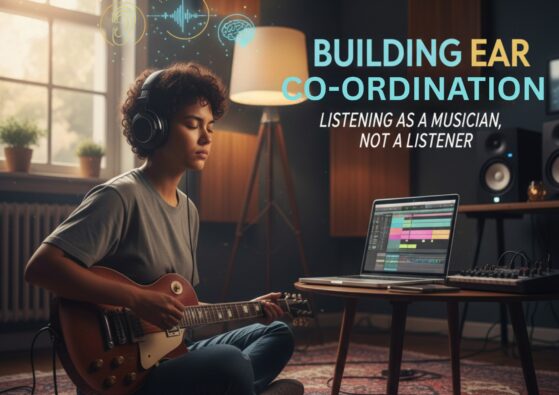Drumming Techniques for Beginners
Choosing the right Drumming Techniques for Beginners is an exhilarating experience that opens up a world of rhythm, creativity, and self-expression. The drum kit serves as the heartbeat of music, providing both foundation and flair across countless genres. Whether you dream of rocking out on stage, jamming with friends, or simply enjoying the art of drumming in your living room, this comprehensive guide will walk you through everything you need to know to get started as a beginner drummer.
Understanding the Drum Kit
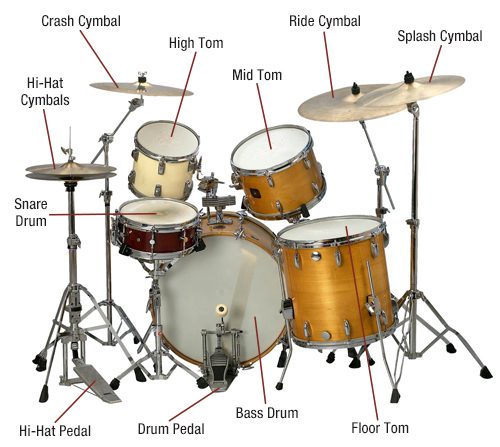
As a beginner, before diving into playing, it’s crucial to familiarize yourself with the components of a drum kit. A standard drum kit typically consists of the following parts, each contributing to the overall sound:
Bass Drum: The largest drum in the kit, the bass drum is played with a foot pedal and produces a deep, resonant sound that serves as the rhythmic foundation of many styles.
Snare Drum: Known for its sharp, cracking sound, the snare drum is typically placed in the center of the kit and played with sticks. It is crucial for accenting beats and providing dynamic contrasts.
Tom-Toms: These cylindrical drums come in various sizes (high, mid, and low toms), each producing a distinct pitch. Toms are often used for fills and melodic elements.
Floor Tom: A larger tom that sits on the floor, providing a deeper sound and often used for fills, the floor tom adds depth to your overall sound.
Hi-Hat: This pair of cymbals is mounted on a stand and can be opened and closed with a foot pedal. The hi-hat is essential for keeping time and adding dynamics to your playing.
Crash Cymbal: Used to create accents and dramatic moments, the crash cymbal adds color and excitement to your drumming.
Ride Cymbal: Typically played during verses, the ride cymbal provides sustained tones and is essential for keeping time during slower sections.
Choosing Your Drum Kit to Improve Your Drumming Techniques
Choosing the right drum kit is essential for your learning experience. You have two main options: acoustic and electronic drum kits.
- Acoustic Drum Kits: These kits provide an authentic drumming experience and are perfect for practice and live performances. However, they can be loud, which may be a concern if you live in an apartment or shared space. Acoustic kits often come in various configurations, so you can select a kit that fits your style and budget.

Electronic Drum Kits: These kits are quieter and often come with built-in practice features, making them suitable for home practice. They allow for a range of sounds and effects, enabling you to experiment with different genres. Some electronic kits also include metronomes and recording capabilities, which can be beneficial for beginners.
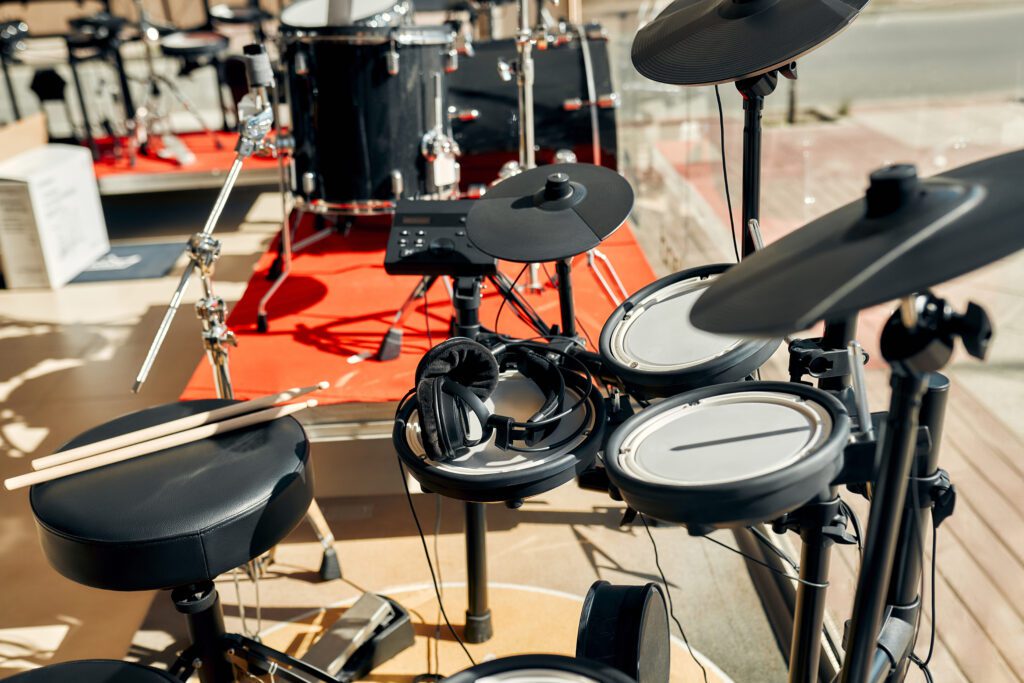
Setting Up Your Practice Space
Creating an effective practice space is crucial for developing your drumming skills. Here are some tips to set up your area:
Quiet Environment: Find a location where you won’t be disturbed while practicing. This will help you focus and immerse yourself in learning.
Comfortable Positioning: Adjust the height of your drum kit to ensure comfortable playing. Your knees should be slightly lower than your hips, and you should be able to reach all drums and cymbals easily.
Use Practice Pads: If you have neighbors or family members nearby, practice pads can help you practice quietly while still developing your technique. Practice pads mimic the feel of a drum and are excellent for warm-ups and rudiment exercises.
Good Lighting: Ensure your practice space is well-lit. Proper lighting can reduce eye strain and help you focus on your drumming.
Drumming Accessories: Consider having a drum throne for comfort and support while playing. A metronome, drumsticks, and a music stand for sheet music are also helpful.
Basic Drumming Techniques as a beginner
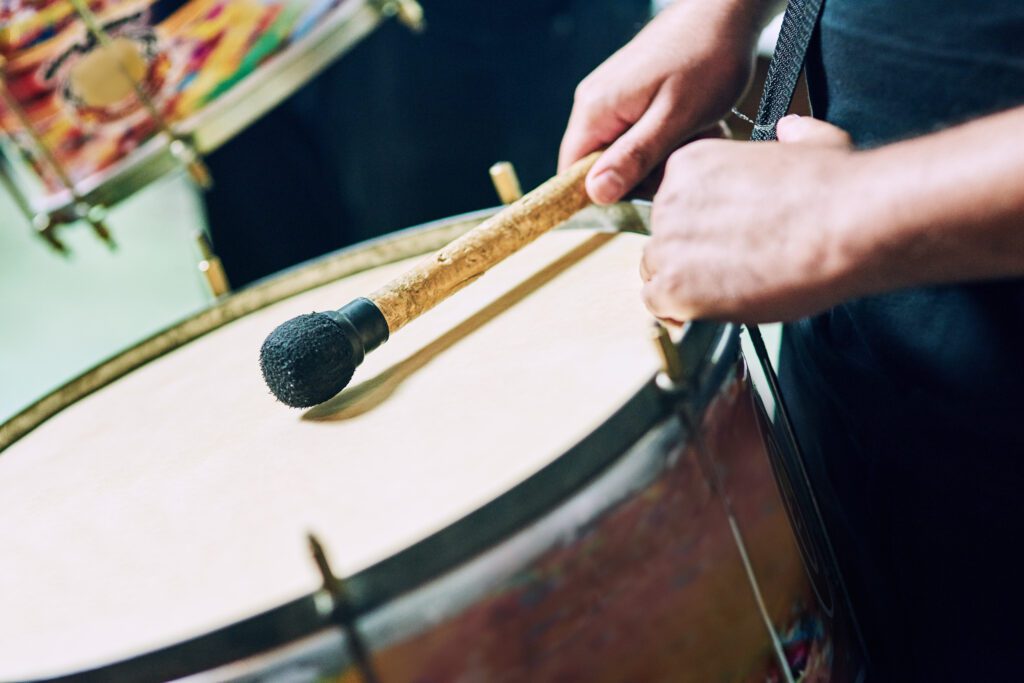
Now that you have your kit set up, let’s explore the fundamental techniques in drum you’ll need to master as a beginner.
1. Proper Grip and Stick Control
Holding your drumsticks correctly is essential for control and technique. Here’s how to grip your sticks:
-
Hold the Stick: Place the stick between your thumb and index finger, letting it rest on your middle finger. Your grip should be firm but relaxed to allow for flexibility. Your index finger should control the stick while your other fingers provide support.
-
Stick Movement: Practice moving the sticks up and down without straining your wrists. The motion should come from your wrists and fingers, not your arms. Start with slow, deliberate movements before increasing speed.
-
Practice Drumming Techniques: Work on single strokes, double strokes, and rudiments like paradiddles to develop your control. Consistent practice of these techniques will strengthen your hands and improve your coordination.
2. Understanding Rhythm and Timing
Drumming is all about rhythm. To become a proficient drummer, you’ll need to understand how to keep time and play in sync with others.
-
Counting Beats: Start counting in a 4/4 time signature, which is the most common in popular music. Count “1, 2, 3, 4” and practice playing along with it. Understanding the basics of time signatures is crucial for keeping track of how music is structured.
-
Using a Metronome: A metronome is a valuable tool that helps you keep a steady tempo. Start slow, and gradually increase the speed as you become more comfortable. Challenge yourself by playing along with varying tempos.
-
Clapping Rhythms: Before playing, practice clapping simple rhythms to internalize timing. This exercise helps reinforce your sense of beat and timing.
3. Learning Basic Beats
As a beginner, it’s important to start with simple beats. Here are a few basic rock beats to get you started:
- Basic Rock Beat:
- Bass Drum: 1 and 3
- Snare Drum: 2 and 4
- Hi-Hat: Eighth notes (1 & 2 & 3 & 4 &)
This basic beat is foundational in rock music and provides a solid structure for playing along with songs.
- Four on the Floor:
- Bass Drum: All four beats
- Snare Drum: 2 and 4
- Hi-Hat: Eighth notes
The “four on the floor” beat is commonly used in dance music and provides a driving rhythm.
Practice these beats until you feel comfortable, then experiment with variations and fills.
Developing Your Drumming Techniques
As you progress, you can begin to explore different aspects of drumming. Here are some key areas to focus on:
1. Drumming Rudiments
Rudiments are fundamental sticking patterns that form the basis of drumming technique. Here are some essential rudiments to practice:
Single Stroke Roll: Alternating hits with each hand (RLRL). This exercise helps develop stick control and coordination.
Double Stroke Roll: Two hits with each hand in succession (RRLL). This rudiment is essential for building speed and fluidity.
Paradiddle: A combination of single and double strokes (RLRR LRLL). This rudiment enhances coordination between your hands and is used in many drumming styles.
Flams: A grace note played before a main note, creating a fuller sound. Flams add texture and dynamics to your playing.
Practicing these rudiments will help improve your coordination and speed. Dedicate time in your practice sessions to focus on each rudiment, gradually increasing your speed and accuracy.
2. Drum Fills
Drum fills add excitement and variation to your drumming. Start with simple fills that use the snare and toms. Here’s a basic fill to practice:
- Count “1, 2, 3, 4” while playing:
- 1: Bass Drum + Snare
- 2: Hi-Hat + Snare
- 3: Tom 1 + Snare
- 4: Tom 2 + Snare
As you become comfortable with fills, experiment with different combinations and placements within your beats. Challenge yourself by creating your unique fills that transition smoothly between sections of a song.
3. Playing Along with Music
One of the best ways to improve your drumming is to play along with your favorite songs. This practice helps you develop your timing, dynamics, and ability to play with other instruments.
Choose Simple Songs: Start with songs that have straightforward drum patterns. Look for songs in a 4/4 time signature to make it easier.
Use Play-Along Tracks: Many resources are available with backing tracks specifically designed for drummers. These tracks allow you to practice your drumming in a musical context.
Record Yourself: Recording your drumming can provide valuable feedback. Listen to the playback to identify areas for improvement. This method helps you gauge your timing and overall performance.
Understanding Drum Notation
Familiarizing yourself with drum notation is crucial for reading sheet music and understanding rhythm patterns. Here’s a breakdown of basic drum notation:
Staff Lines: The staff consists of five lines where different drums and cymbals are notated.
- The snare drum is typically notated on the second line from the top.
- The bass drum is represented on the bottom line.
- The hi-hat is generally notated on the top line.
- Cymbals are typically represented above the staff.
Note Values: Understand the different note values (whole notes, half notes, quarter notes, eighth notes, etc.) and their corresponding rests. This understanding will help you read drum patterns accurately.
Rhythmic Patterns: Practice reading and playing basic rhythmic patterns. Start with simple exercises and gradually progress to more complex patterns as your skills improve.
Building Your Drumming Routine
Establishing a consistent practice routine is vital for progress. Here’s a sample practice schedule for beginners:
Sample Practice Routine
Warm-Up (10 minutes): Start with basic rudiments and stick control exercises. Focus on keeping your strokes consistent and even.
Technique (15 minutes): Work on specific techniques, such as grip, timing, and rhythm exercises with a metronome. Choose one or two rudiments to focus on.
Learning Beats (15 minutes): Practice basic drum beats and variations. Aim to play along with tracks for practical application. Focus on playing with precision and maintaining steady time.
Drum Fills and Grooves (10 minutes): Work on fills and how they fit within the context of your beats. Experiment with incorporating fills into your practice.
Creative Play (10 minutes): Spend time experimenting with your drumming, creating your own beats, and improvising with fills. Allow yourself to explore different styles and genres.
Cool Down (5 minutes): End your practice with some relaxed drumming to help your hands and wrists recover. This can also include playing along with your favorite songs for fun.
Resources for Learning Drums
In addition to personal practice, many resources are available to help you learn and improve your drumming skills.
1. Online Courses
Numerous online platforms like us, offer structured drum lessons for beginners, including video tutorials, practice exercises, and progress tracking. Some other popular options include:
Drumeo: Offers a variety of video lessons and play-along tracks, with expert instructors guiding you through different techniques and styles.
YouTube: An excellent resource for free tutorials. Search for beginner drum lessons, song covers, and technique demonstrations.
2. Mobile Apps
Several drumming apps are available to assist with practice and skill development. Here are some worth exploring:
Simply Drums: An app that provides a wide range of lessons, play-along tracks, and virtual drum kits for practicing on the go.
Drum School: Offers structured lessons for beginners, covering essential techniques and skills.
Rhythm Lab: This app focuses on rhythm training and exercises, helping you develop your timing and coordination.
3. Books and Guides
Consider investing in beginner drumming books that provide comprehensive guidance on technique, rhythms, and drumming styles. Here are a few recommended titles:
“Stick Control for the Snare Drummer” by George Lawrence Stone: A classic drumming book focusing on developing stick control and coordination.
“The Drummer’s Complete Vocabulary as Taught by Alan Dawson” by John Ramsay: A comprehensive guide covering various drumming styles, techniques, and exercises.
Joining the Drumming Community
Getting involved in the drumming community can provide motivation and inspiration. Here are some ways to connect with fellow drummers:
1. Local Drum Circles
Look for local drum circles or community events where you can play with others. These gatherings allow you to learn from experienced drummers and share your passion for music.
2. Online Forums and Social Media
Join online drumming communities and forums where you can ask questions, share experiences, and connect with fellow drummers. Platforms like Facebook, Instagram, YouTube, LinkedIn, Twitter, Pinterest, Reddit, Threads, Quora and dedicated drumming websites offer valuable insights and resources.
3. Drum Lessons
Consider taking lessons from a local drum instructor or online drum classes. Personalized guidance can significantly enhance your learning experience and provide tailored feedback on your progress.
Advanced Drumming Techniques
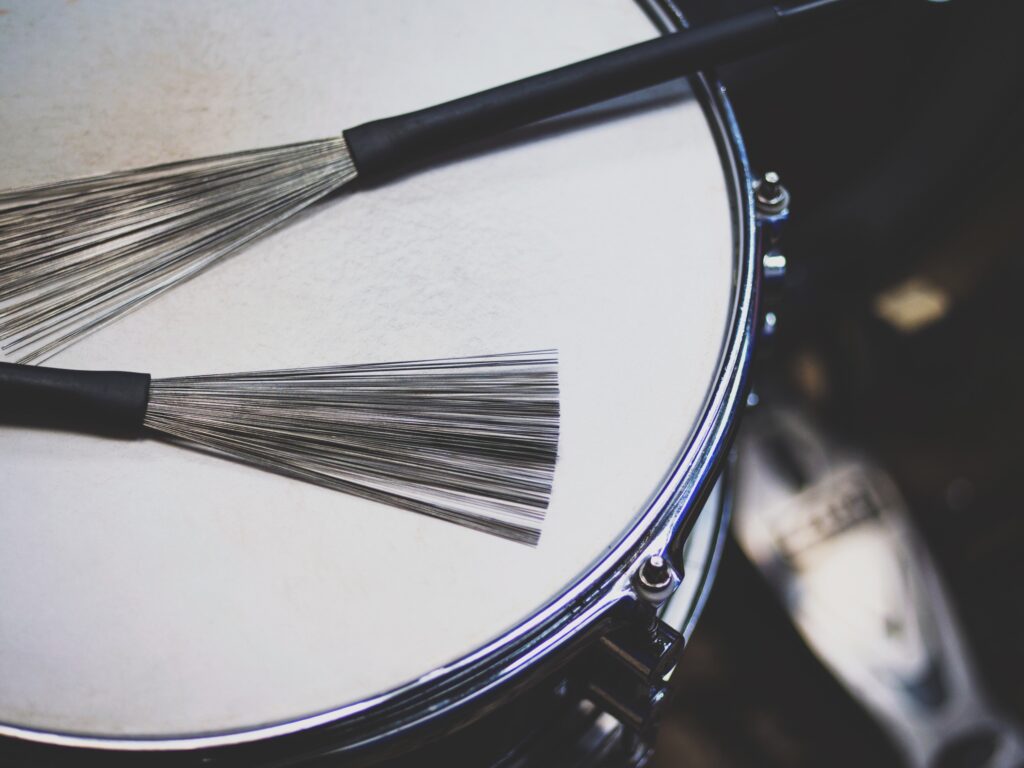
As you gain confidence in your drumming skills, consider exploring advanced techniques to expand your abilities:
1. Ghost Notes
Ghost notes are subtle, lightly played notes that add depth and texture to your drumming. They are often played on the snare drum and help create a more intricate groove.
To practice ghost notes:
- Play a basic beat and incorporate ghost notes between the main hits of the snare. For example, on the 2 and 4 beats, add softer snare hits between the bass and hi-hat.
2. Dynamics
Understanding and implementing dynamics is crucial for creating expressive drumming. Practice playing the same beat at different volumes, ranging from soft to loud, to develop control over your dynamics.
Experiment with varying the intensity of your strokes, and pay attention to how it affects the overall feel of your playing.
3. Brush Technique
Brushes are a type of drumstick with wire bristles that create a softer, smoother sound. Learning to play with brushes allows you to explore jazz and softer music styles.
Start by practicing basic patterns with brushes, focusing on creating smooth, even strokes across the snare and hi-hat.
Conclusion
Embarking on your journey to learn drums for beginners is an exciting and rewarding experience. With dedication, practice, and the right resources, you can develop your drumming skills and discover your unique musical voice. Embrace the process, stay patient with yourself, and most importantly, have fun!
As you continue your drumming journey, remember that consistency and creativity are vital. Explore various genres, experiment with different techniques, and connect with the drumming community for inspiration. Your commitment to learning will yield remarkable results as you progress in your drumming skills.
For more information and exciting resources about learning drum, visit our website at The Mystic Keys. For more music content and exciting offers follow us on
Facebook, Instagram, YouTube, LinkedIn, Twitter, Pinterest, Reddit, Threads, and Quora.






